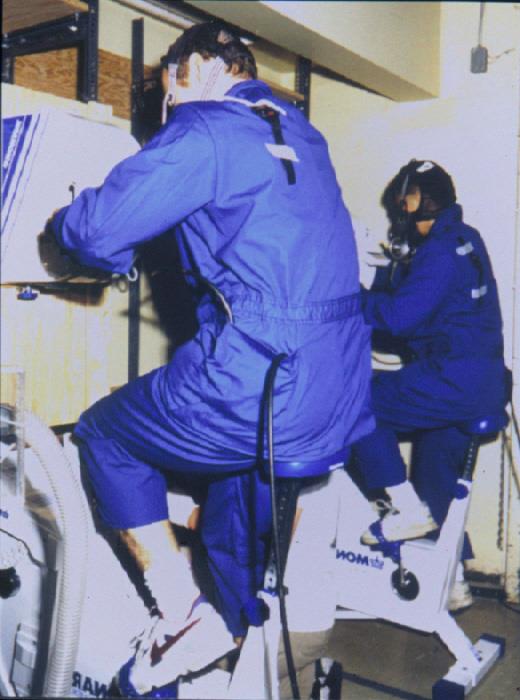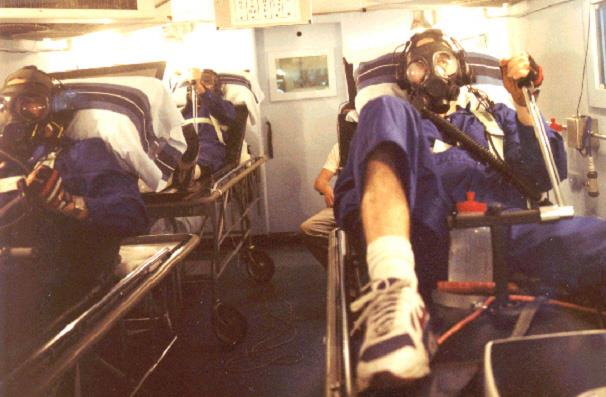Using exercise to help prevent decompression sickness
Purpose
This project involves designing and testing more efficient protocols to prevent decompression sickness in astronauts performing spacewalks, also known as extravehicular activities (EVA), from the International Space Station (ISS).
Background
Astronauts performing EVA from the space shuttle must undergo a 12-hour decompression protocol to minimize their risk of developing decompression sickness (DCS). This process is called oxygen prebreathing. During the shuttle prebreathe protocol, astronauts breathe 100% pure oxygen for one to two hours at normal cabin pressure, then reduce the cabin pressure to 10.2 psi for 10 hours, and finally, breathe 100% pure oxygen for another hour before performing the EVA. This 12-hour decompression protocol is an effective countermeasure against DCS, but the lengthy time spent decompressing and preparing for EVA reduces mission efficiency. The construction of the ISS will require over 160 EVA missions. In order to complete the Station as scheduled, a more efficient decompression protocol is needed.

Subjects performing dual cycle ergometry at DRDC-Toronto as part of a NASA-led project to develop a 2-hour prebreathe protocol. (Credit: NASA)
Project description
This is a NASA-led project conducted in collaboration with the Canadian Space Agency (CSA), Defence Research and Development Canada (DRDC-Toronto), Duke University (North Carolina), and the Hermann Center for Environmental, Aerospace and Industrial Medicine (University of Texas).
The project involves testing a series of protocols that use exercise during the 100% oxygen prebreathe. Denitrogenation - the elimination of nitrogen from the body - depends on how much blood reaches the tissues. Since blood flow increases with exercise, denitrogenation also increases and the amount of time spent preparing for an EVA can safely be reduced.
Research teams, including a Canadian team headed by the CSA, are evaluating a variety of prebreathe protocols - each of which varies the duration and intensity of the exercise regimen. Canadian researchers are testing the protocols using the hypobaric chamber at DRDC in Toronto . Research subjects perform the prebreathe protocols prior to entering into the chamber. Once inside, the subjects experience the same atmospheric pressure changes that astronauts are exposed to during an EVA mission. They then perform a series of tasks that simulate the work performed during an EVA.

Subjects testing prebreathe protocols at 4.3 psi in the hypobaric chamber at DRDC-Toronto. (Credit: NASA)
Results
One of the tested protocols is now approved for regular use by those astronauts who wear the American EVA Mobility Unit (EMU) space suit and perform EVA via the ISS airlock. Astronauts using the Russian-made Orlan space suit will not be following this protocol due to differences in the Orlan suit's pressurization.
Work is ongoing to develop more efficient protocols to reduce the risk of decompression sickness for future EVA.
